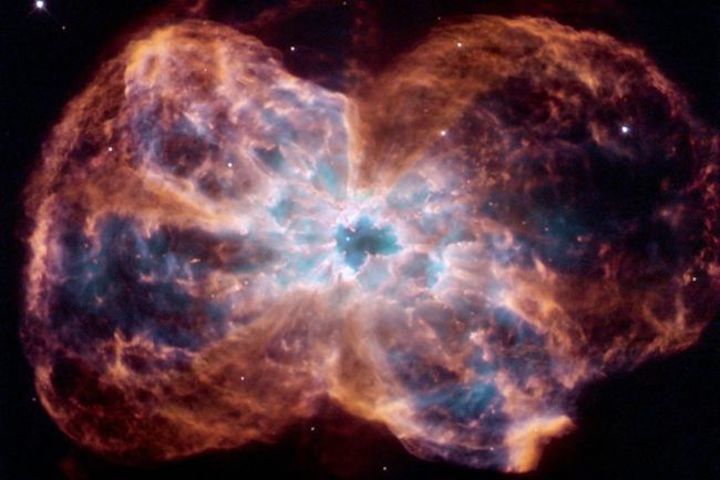23.08.2020

Scientists have bolstered Albert Einstein's theory of general relativity by exploring the strange mysteries of white dwarf stars.
Astronomers have long theorized about the relationship between a white dwarf star's mass and radius but haven't been able to observe the stars’ mass-radius relationship until now, a new study shows. As white dwarf stars gain mass, they shrink in size unlike most known celestial objects.
In this new work, researchers used a novel method that incorporated data from thousands of white dwarfs to observe the strange phenomenon and provide further evidence for the theory of general relativity.
When stars like our sun run out of fuel, they shed their outer layers and are stripped down to their Earth-sized core. This core is known as a white dwarf star, which is believed to be the final evolutionary state of a stellar object.
But these stellar remnants hold a mystery, as when white dwarfs increase in mass, they shrink in size. White dwarfs therefore will end up with a mass similar to that of the sun, but packed into a body the size of the Earth.
White dwarfs become so small and compact that they eventually collapse into neutron stars, highly dense stellar corpses with a radius that usually does not extend beyond 18 miles (30 kilometers).
The odd mass-radius relationship within white dwarf stars has been theorized about since the 1930s. The reason why white dwarfs increase in mass while shrinking at the same time is thought to be caused by the state of its electrons — as a white dwarf star is compressed, the number of its electrons increases.
This mechanism is a combination of quantum mechanics — a fundamental theory in physics on the motion and interaction of subatomic particles — as well as Albert Einstein's theory of general relativity, which deals with gravitational effects.
"The mass-radius relation is a spectacular combination of quantum mechanics and gravity, but it's counterintuitive for us,"" Nadia Zakamska, an associate professor at the Department of Physics and Astronomy at Johns Hopkins University, who supervised the new study, said in a statement. ""We think as an object gains mass, it should get bigger."
In this new study, the team from John Hopkins University developed a method to observe the mass-radius relationship in white dwarfs. Using data collected by the Sloan Digital Sky Survey and the Gaia space observatory, the researchers looked at 3,000 white dwarf stars.
The team of researchers measured the gravitational redshift effect, which is the effect of gravity on light, on the stars. As light moves away from an object, the wavelength of light coming from the object lengthens, causing it to appear redder. By looking at the gravitational redshift effect, they were able to determine radial velocity of the white dwarf stars that share a similar radius.
Radial velocity is the distance from the Sun to a given star which determines whether a star is moving towards or away from the Sun. By determining the stars’ radial velocity, they were also able to determine the change in the stars’ mass.
"The theory has existed for a long time, but what's notable is that the dataset we used is of unprecedented size and unprecedented accuracy," Zakamska added. "These measurement methods, which in some cases were developed years ago, all of a sudden work so much better and these old theories can finally be probed."
The method used in the study essentially turned a theory into an observational phenomenon. Additionally, it can be used to study more stars in the future, and can help astronomers analyze the chemical composition of white dwarf stars.
"Because the star gets smaller as it gets more massive, the gravitational redshift effect also grows with mass," Zakamska said. "And this is a bit easier to comprehend—it's easier to get out of a less dense, bigger object than it is to get out of a more massive, more compact object. And that's exactly what we saw in the data."
The study was accepted for publication in The Astrophysical Journal and has been posted online to the preprint server arXiv.org.
Quelle: SC
